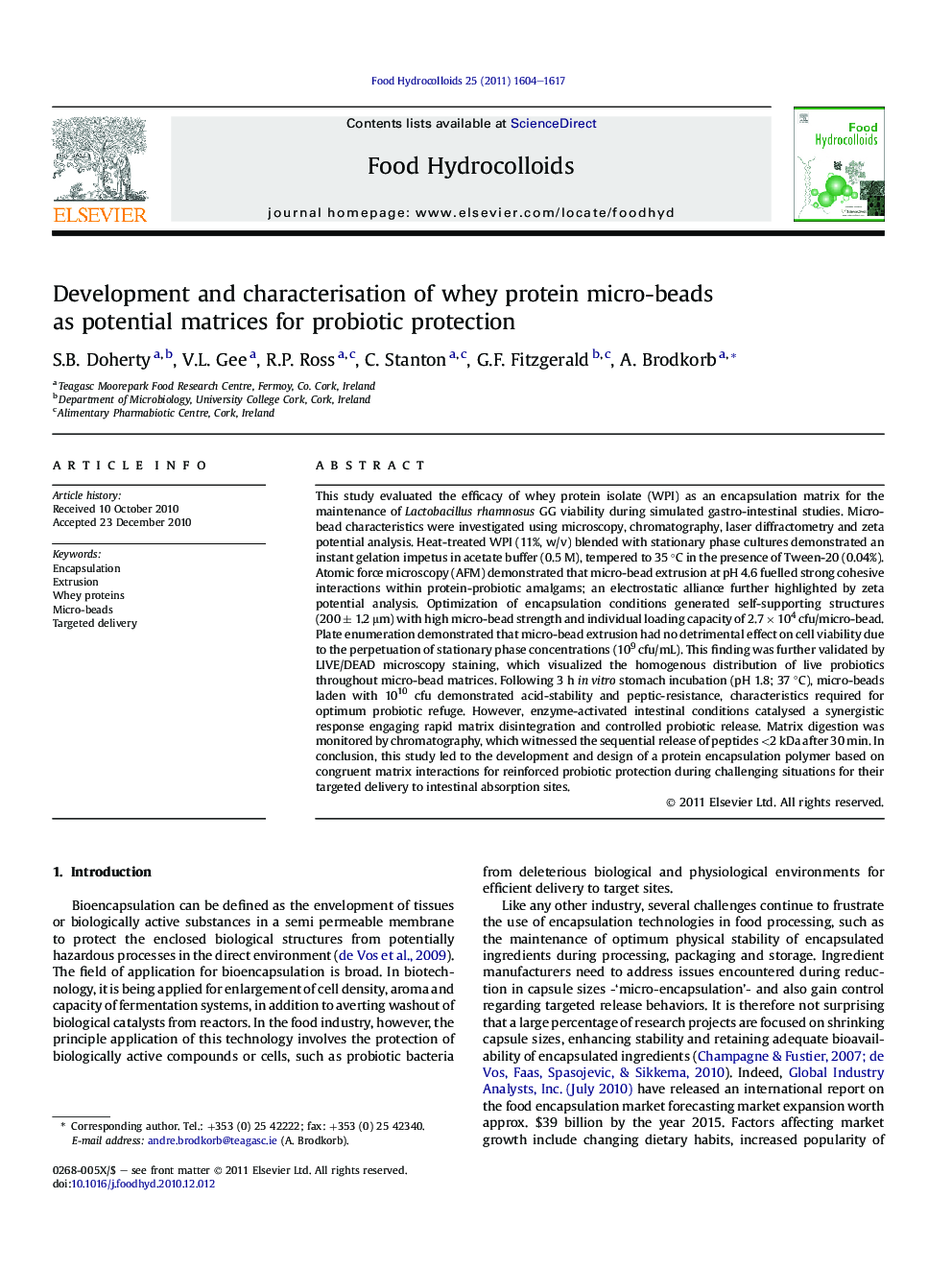| Article ID | Journal | Published Year | Pages | File Type |
|---|---|---|---|---|
| 604562 | Food Hydrocolloids | 2011 | 14 Pages |
This study evaluated the efficacy of whey protein isolate (WPI) as an encapsulation matrix for the maintenance of Lactobacillus rhamnosus GG viability during simulated gastro-intestinal studies. Micro-bead characteristics were investigated using microscopy, chromatography, laser diffractometry and zeta potential analysis. Heat-treated WPI (11%, w/v) blended with stationary phase cultures demonstrated an instant gelation impetus in acetate buffer (0.5 M), tempered to 35 °C in the presence of Tween-20 (0.04%). Atomic force microscopy (AFM) demonstrated that micro-bead extrusion at pH 4.6 fuelled strong cohesive interactions within protein-probiotic amalgams; an electrostatic alliance further highlighted by zeta potential analysis. Optimization of encapsulation conditions generated self-supporting structures (200 ± 1.2 μm) with high micro-bead strength and individual loading capacity of 2.7 × 104 cfu/micro-bead. Plate enumeration demonstrated that micro-bead extrusion had no detrimental effect on cell viability due to the perpetuation of stationary phase concentrations (109 cfu/mL). This finding was further validated by LIVE/DEAD microscopy staining, which visualized the homogenous distribution of live probiotics throughout micro-bead matrices. Following 3 h in vitro stomach incubation (pH 1.8; 37 °C), micro-beads laden with 1010 cfu demonstrated acid-stability and peptic-resistance, characteristics required for optimum probiotic refuge. However, enzyme-activated intestinal conditions catalysed a synergistic response engaging rapid matrix disintegration and controlled probiotic release. Matrix digestion was monitored by chromatography, which witnessed the sequential release of peptides <2 kDa after 30 min. In conclusion, this study led to the development and design of a protein encapsulation polymer based on congruent matrix interactions for reinforced probiotic protection during challenging situations for their targeted delivery to intestinal absorption sites.
Graphical abstractFigure optionsDownload full-size imageDownload as PowerPoint slide
